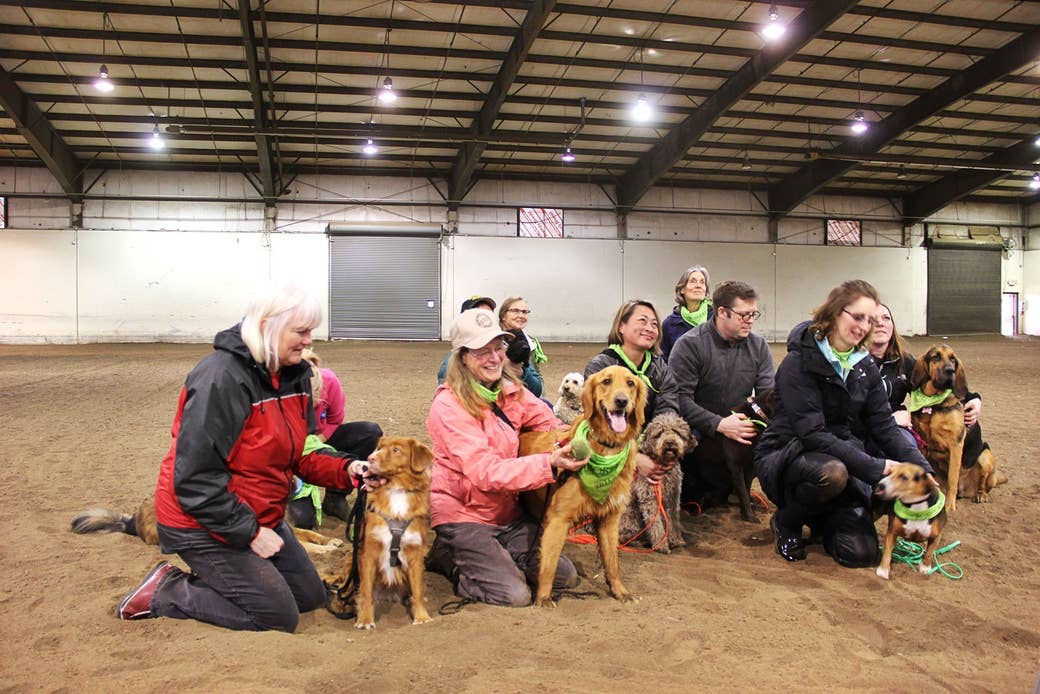
Charles Lefevre is bragging about his dog. “Dante loves to hump,” he says, “but I think he might like truffles even more.”
Dante is a dog worth bragging about: a professional truffle hunter. He’s a lagotto Romagnolo, an Italian breed known for its soft, tight curls and knack for mushroom-sniffing. He was bred from America’s finest, and trained to sniff out the rife and ripe truffles hiding in Oregon’s forest soil. He is, from all accounts, a Very Good Boy. But he’s not here to corroborate that, because Dante is a professional, and we’re here today to watch amateurs.
We are standing in a large dirt-floored building usually reserved for horse shows, at the second annual Joriad Truffle Dog Championship in Eugene, Oregon. Lefevre and his wife, Leslie Scott, have organized this event as part of the 10th annual Oregon Truffle Festival. Dogs of all breeds and sizes and levels of expertise will compete to see who is best at finding truffles, starting indoors with synthetic scents, on day one. Those who succeed will move on to the finals on day two, which take place in the forest.
It’s all very, very cute — like the Puppy Bowl, but on a larger scale, in real life, and set against the muted tones of the Pacific Northwest. The narrators are not well-trained Animal Planet commentators, but enthusiastic boomers who love dogs and woods and own a lot of rainproof pants.
The majority of Oregon truffles are harvested using rakes, a method that both disturbs the soil (along with the invisible mycorrhizal network that truffles spring from) and often unearths more low-quality, immature truffles than ripe ones. Dogs (or pigs), on the other hand, can smell ripeness and pick out only the truffles that are ready, so their gentle noses are better for Earth and tastebuds alike.
The Joriad, like the rest of the festival, exists to boost the price and reputation of dog-harvested Oregon truffles so that they can better compete with European imports. But what’s actually going on here feels as far removed from big business as you can get. The whole thing has the vibe of a small-town event, all fresh chilly air blowing through the place and everyone chatting at folding craft tables. Outside, the sky switches between pouring rain and sun.
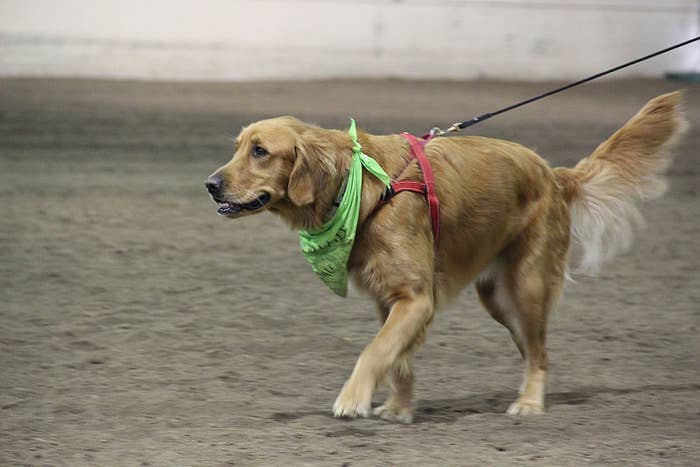
We stand around and watch contestants trickle in, dogs on leashes receiving star-athlete levels of welcome. Stella, a lagotto Romagnolo who placed in second last year, gets what could be considered call a standing ovation if everyone weren’t already standing. The spectators — maybe 60 of them — take their seats, and the emcee announces the first competitor. Oh, right: There’s an emcee.
"I think I got it? Did I get it? I get a treat?"
The first event is the Truffle Odor Recognition Trial, or TORT to those in the know. The dogs inspect a line of bins filled with dirt, and their owners hope that they find the things that have been spritzed with truffle oil. Each dog has its own style: Some trot swiftly, their noses never lifting more than an inch or two from the ground, like a particularly agile vacuum. Some bob their snouts up and down, looking ahead and then at the ground, stopping to sniff at each bin. Some dogs run in efficient straight lines and some twirl in circles. These tendencies don’t seem to determine success.
The first victories are small thrills to watch. When a dog finds a fake truffle — or thinks they have — they wag their tail, looking back up at their owner in both statement and question: "I think I got it? Did I get it? I get a treat?" The owner puts a hand or a fist up in the air and decisively yells: “TRUFFLE!” A judge comes over and decides. If they’re lucky, there’s a similarly loud confirmation: “TRUFFLE!” And the crowd cheers gamely. It’s a very modest form of suspense.
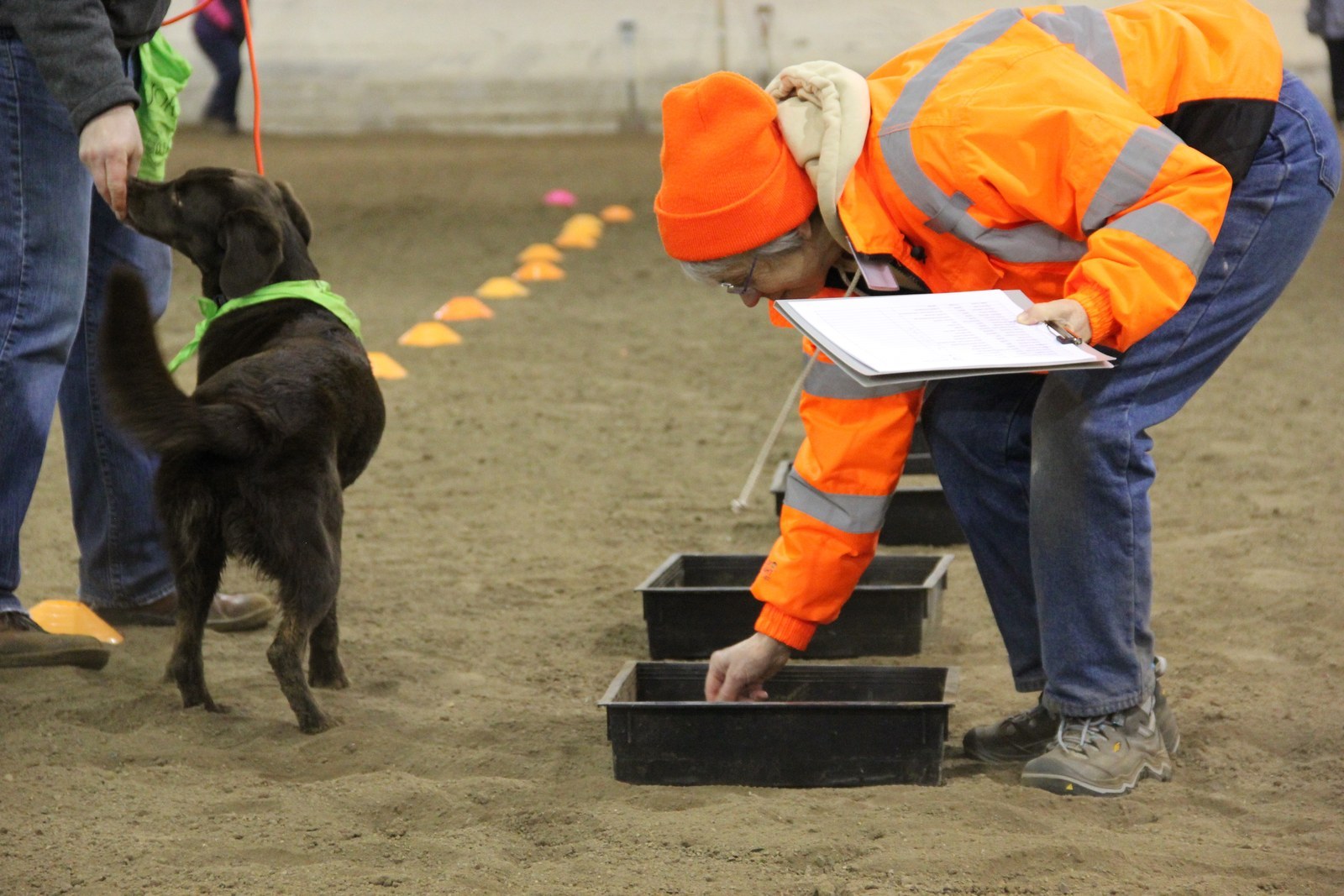
Over the weekend in Eugene and its mossy green environs, I am surrounded by a unique and enthusiastic mixed breed of Dog People and Mushroom People. These are not the high-strung, type-A sort of dog people satirized in Christopher Guest’s Best in Show, but the sort that treat dogs like children, and as such seek out hobbies they can share with their four-legged little ones. Likewise, their interest in truffles is not snobbery, or the kind of secretive obsession you might associate with professional foragers. It’s more just a happy accident of living in Oregon — one of the few places in the United States where cultivated truffles thrive — and wanting something to do outdoors with a beloved pet.
"It's casual. It's country," says Cynde Denny, whose frontrunner Alba — a lagotto Romagnolo — strikes out in the first round.
I've never been to Westminster, but I've seen it on TV; even for spectators it seems like an environment thick with stress. This is Westminster on legalized recreational marijuana, plus a scenery change and an attitude check. Training a dog to hunt truffles isn’t an act of taming or perfecting; it’s all about encouraging them, and giving them an outlet for their natural talents (sniffing! seeking! getting muddy!). If a truffle comes along, that’s a nice bonus.
This is Westminster on legalized recreational marijuana, plus a scenery change and an attitude check.
This attitude feels like a relief when so many restaurants, in big and small cities alike, still wave truffle oil like it’s a flag of fanciness, a sign of exceptional taste that needs to be drizzled on the simplest foods to “elevate” them (I’m looking at you, mac and cheese). Yes, sure, these Joriad participants like eating truffles, clearly enjoyed the hors d’oeuvre laced with them at the festival reception. Nothing wrong with a nice truffle risotto! But that isn’t the draw here.
In 2016, it’s easy to look out at the world and think, We’re ruining everything. Humans have managed to devise systems for almost every kind of harvest, from oil to almonds, that prove destructive to the Earth. Here in Oregon, in search of the money (or maybe the glamour) that truffles can bring, less fastidious harvesters have to some extent soiled both the state’s soil and its reputation.
We’re clumsy hunters. We don’t have the noses for it. But, if the hobbyists and animal lovers here at the Joriad have what it takes to turn a fledgling local industry into something stronger, what their dogs might be able to offer is a kind of redemption.
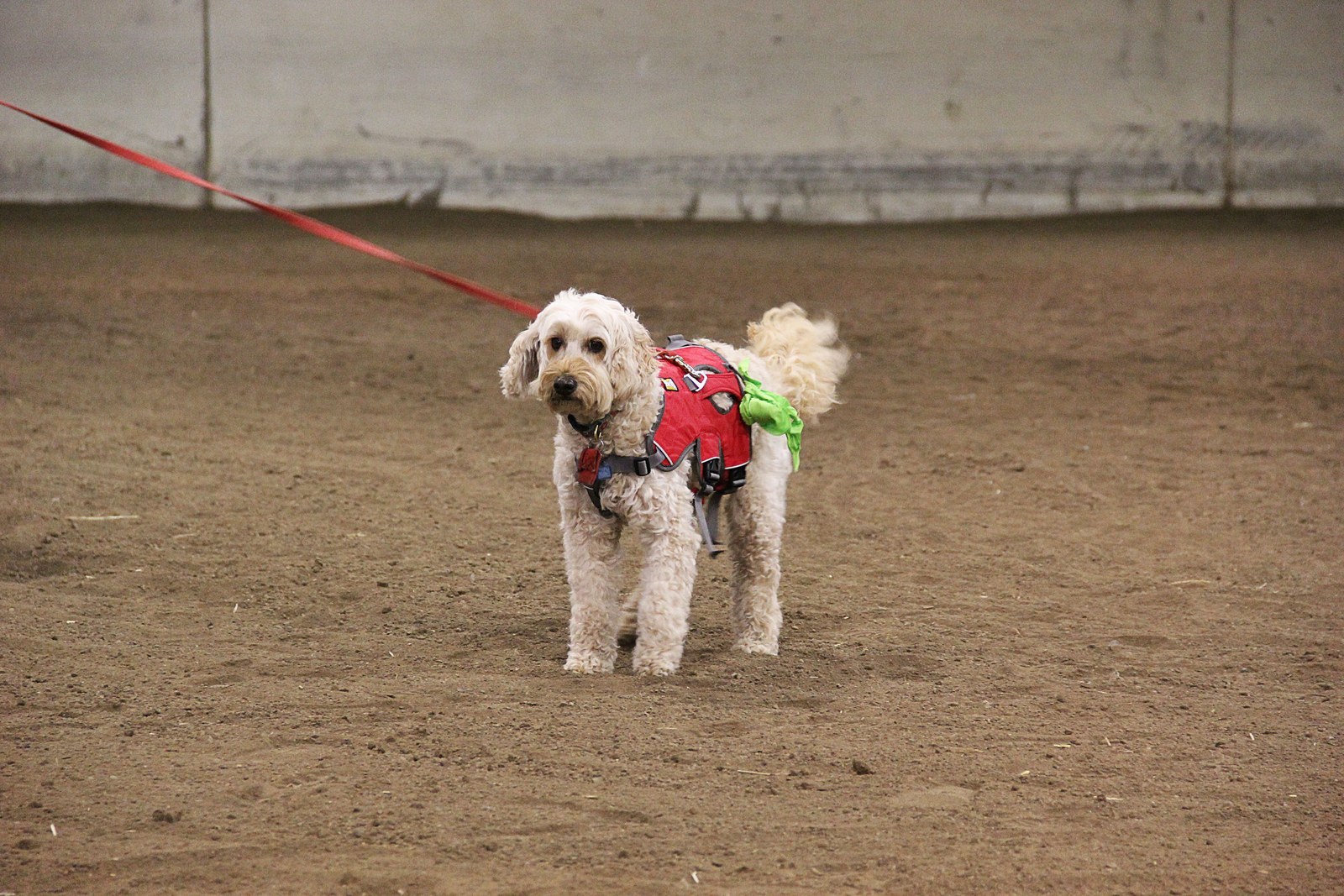
Back in the horse barn, 10 dogs have moved on to the second round of day one’s events, which is more freestyle: A bunch of truffle-scented balls have been hidden beneath the dirt, and each dog has five minutes to find five. They rove around, and I start to imagine them in the wild, zagging around trees. Some track the ground up and down in lines, while some take a more abstract route. At each potential find there's a little dialogue between dog and owner: Are you sure? the owner asks, sometimes with words and sometimes not. A pause, and again: Are you sure? Sometimes the dog isn’t so sure. They all develop their own little languages, owner and pup.
Only one dog actually finds five. But everyone tried their best, and here, that’s what counts. This event clearly functions more as entertainment and practice for those getting into the truffle game than it does as a celebration of excellence.
Roscoe, a 20-month-old mixed breed, finds nothing. His family, a mother and two kids, watches in the stands as dad leads him around. After he comes up dry he goes to meet them, tail wagging. She congratulates him: “You did a good job, Roscoe! You did a good job!” Roscoe has already forgotten what happened. I keep thinking of what they say about dogs who lose a limb — they don’t even remember they had it. It’s easy to get jealous of that sort of amnesia.
Five dogs find enough faux truffles to qualify for the final round, which will happen outdoors, with real truffles, tomorrow. Before we disperse there’s a group photo of everyone, people and dogs, half of whom are now coated with mud from toes to tummies after spending just a few minutes outside. It’s appropriate foreshadowing for tomorrow, whose forecast may as well just read "wet."
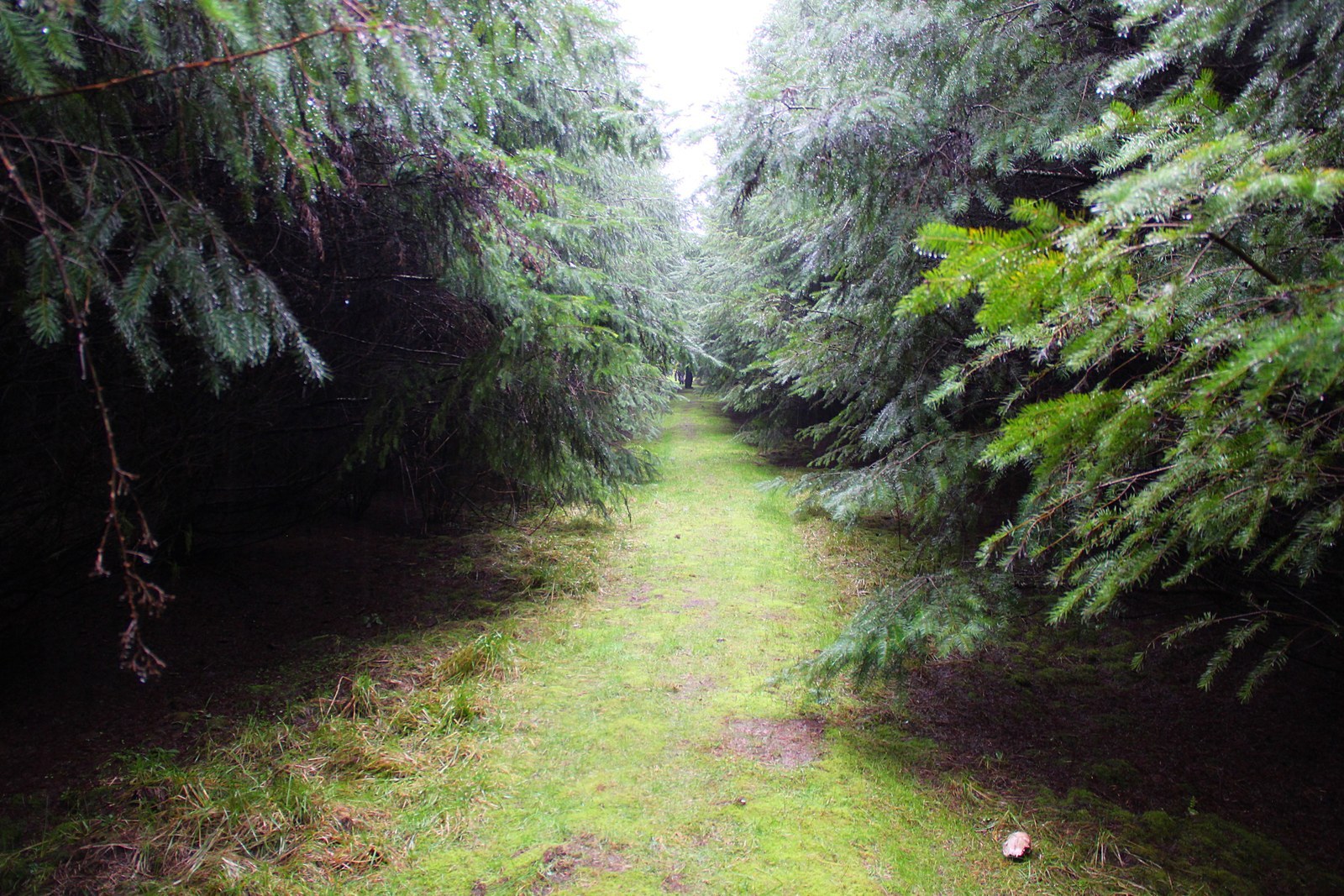
On day two we go into the woods, an undisclosed location half an hour outside of the city. It’s pouring fat, splattery rain that makes the landscape’s grays grayer and greens greener. I’m unprepared, know I’m going to get soaked, and don’t really care. We’re in the big leagues now. I’m ready to see some adorable dogs try to find some very expensive mushrooms. And, whether it’s in the spirit of the occasion or not, I’m ready for one of them to win.
In the woods, everything is dark. It’s the middle of the day but feels like evening, every photo I take is night-like, and the rain doesn’t help. The only colors that interrupt the landscape are the peppy blues and pinks of rain gear, and there are lights tacked on to every dog’s harness to help keep track of them.
Everything is, immediately, all business. The finals, unlike the qualifying events, aren’t open to public spectators. The finalists seem resolved: dogs geared up, humans with game faces on. Each pair has their own referee, to keep found truffles in a little plastic box and tick off their quantity with a waterproof pencil. Did you know they make waterproof pencils?
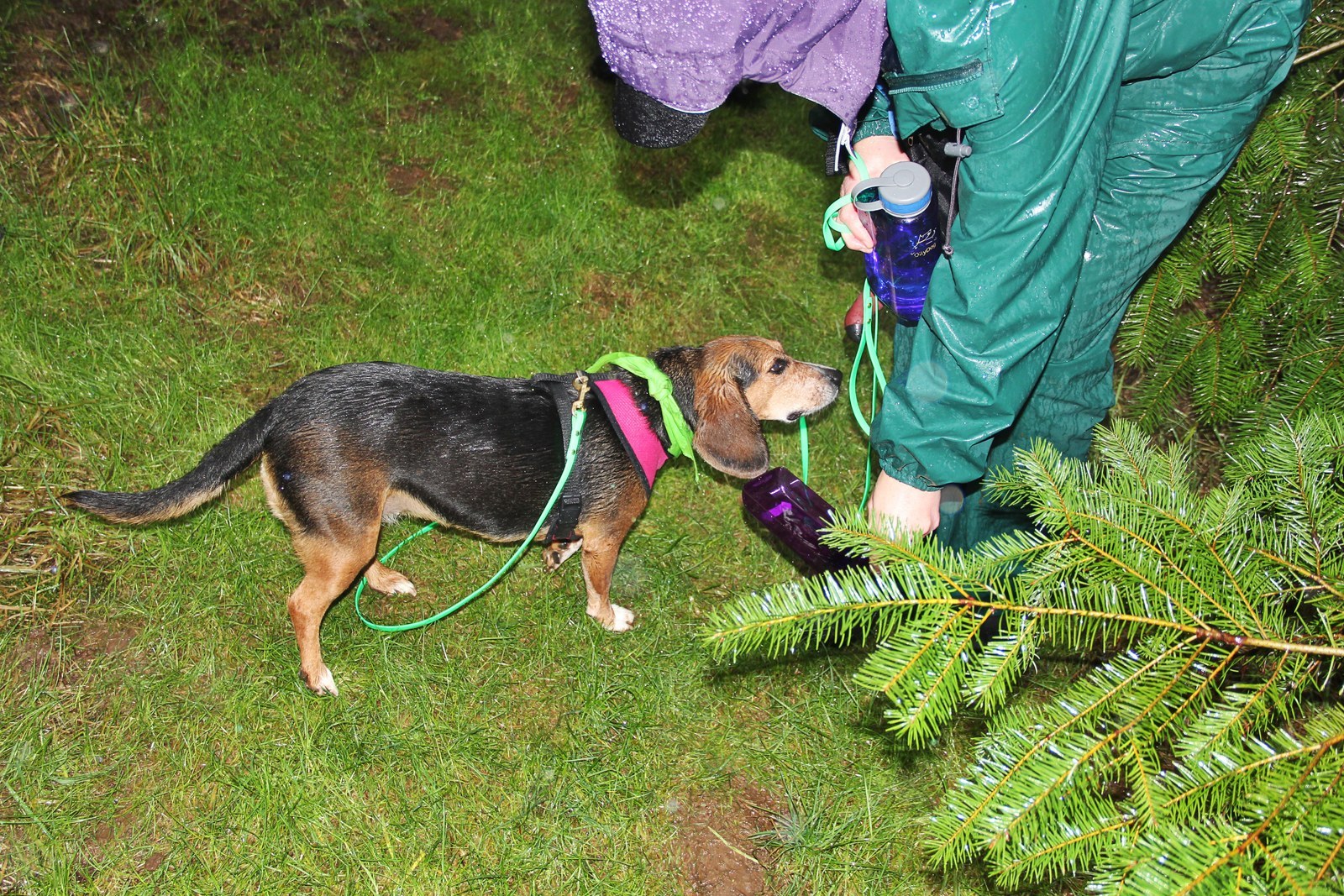
The whole affair takes just 45 damp minutes. Each dog has its own little radius of land it’s supposed to stick to, so I just follow the first pair I see: Linda Gallacher and her Nova Scotia duck tolling retriever, Bella, a tiny thing who seems undeterred by the rain. She finds something, or might have. After a bit of pawing she looks up and then waits as her owner crouches, tenderly moves soil around, finds nothing, stands up. Linda says sweetly, hopefully, “Get the truffle! Get it!” More sniffing, a potential find, a look up. More moving soil around, then moving on.
The way these people interact with their dogs is a fluid switching between following and watching and listening and redirecting — letting the dog guide until they've lost their way and need a tug on the leash to redirect them, or maybe remind them of what’s happening in the first place. But there’s almost always cooing, or a little kiss. Success brings treats. It’s a sweet relationship to watch, even when you’re covered in mud, even when you’re starting to worry about the possibility of nobody finding anything.
I briefly catch up with last year’s runner-up, Stella, and her owner, Sunny Diaz, who seem to be the most serious of the bunch. Their referee asks me not to get too close, because Stella gets easily distracted. But Diaz doesn’t; she never once looks up at me, keeping her eyes locked a few feet ahead of Stella, and then intently on any ground the dog sniffs in a particular way.
At one point Stella starts to whine for a treat and Diaz laughs: “You don't get a treat until you show me the truffle! I know, it’s so unjust.” They find something so tiny that Diaz isn’t sure of its trufflehood. It doesn’t seem like a very productive day for anyone. I get lost and fall in some mud. Someone somewhere says there are 10 minutes left.
Again I find Linda and Bella, and feel a small swell of pride when I hear they’ve found 11 (!) truffles. Like I somehow intuited the winning dog from the beginning, as if that says anything about me. An eager fan always wants to take credit.
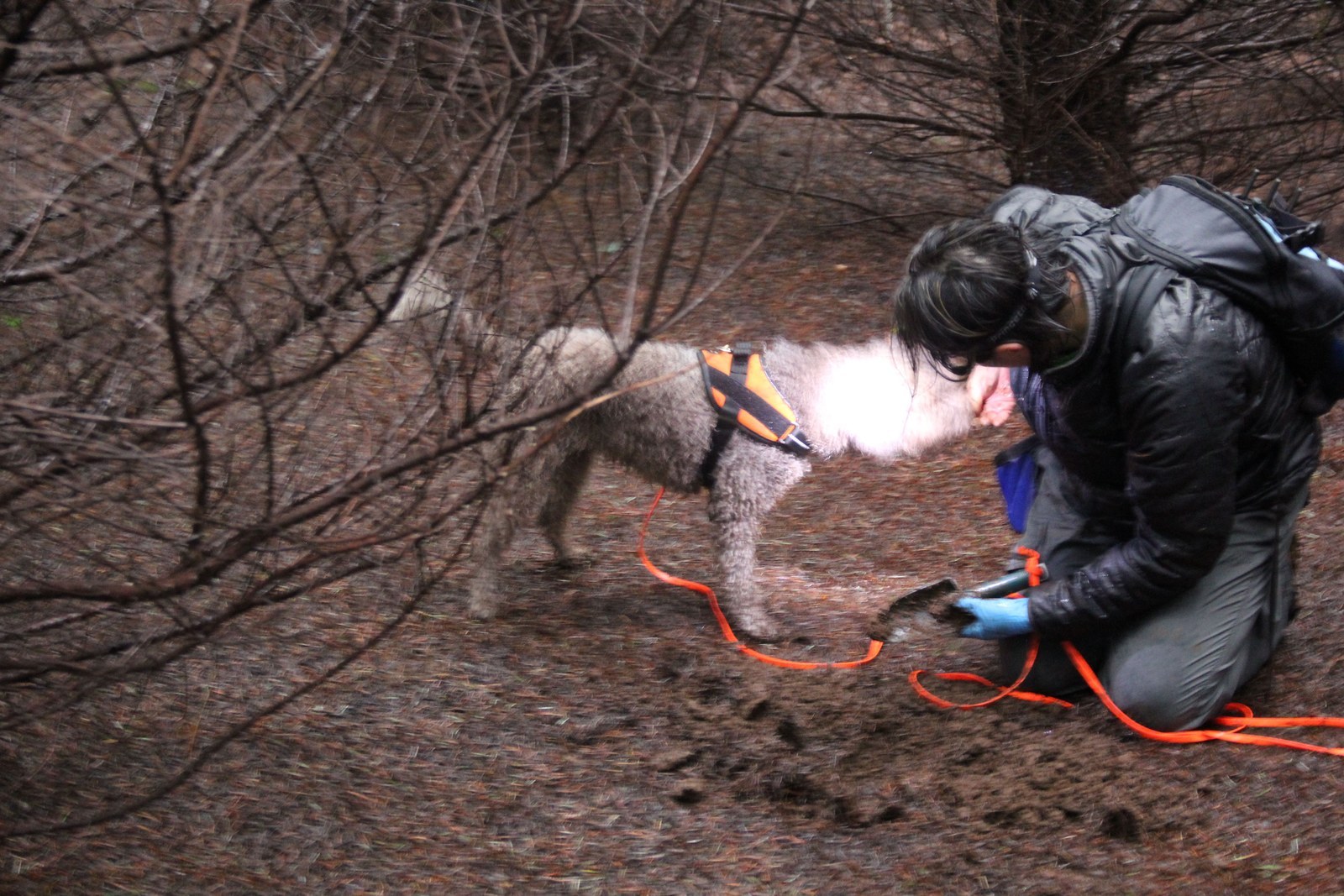
A noise sounds and it’s over. We all head to a barn nearby, where there’s a craft table with pastries and coffees and also a few heat lamps, and lots of wet people and dogs. Charles Lefevre is seated at a table, determining whether or not each found thing is indeed a white truffle. I chat with another Leslie (Chandler) whose little beagle Molly found nothing, but then again it was her first time out in the wild. I mention that this community seemed like the opposite of cutthroat, that it felt more like recreation than competition.
Not everyone wins, but everyone gets a treat.
“Oh yeah,” she says, “dog people aren't like that. ‘Dog first’ is how they operate — if the dog isn't having fun, they stop.” Of her relationship with Molly, she later tells me: "We are a team, and I don't want to let her down.”
Chandler — like many other owners — first found out about truffle hunting after putting Molly through more general “nose training,” where dogs are trained to track scents like birch, clove, and anise. Truffles are a logical next step, and conveniently edible. But nobody here used the word foodie, or even mentioned foraging as a secondary pastime. Sure, people eat what they find, but this was an earnest way for them to engage with their pets, not a way to find expensive mushrooms on the cheap.
What the dogs themselves got out of the weekend was not the rush of success, but — I’m assuming, here — the joy of doing what they are genetically programmed to do: to sniff, to hunt, to make their humans happy. And in a lot of ways, the Joriad feels like a triumph of dog instincts over human instincts. It’s about play over work, seeking over finding, pack over individual. Not everyone wins, but everyone gets a treat.
Leslie Scott and Charles Lefevre are playing a long game here, aiming to cultivate an industry that will both help preserve the state’s ecology and boost its reputation in the food world. They do seem to be as enthusiastic about this rare little fungus as their dog Dante is. But they seem even more excited about the community they’re building around it.
